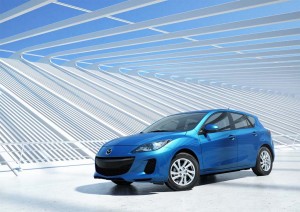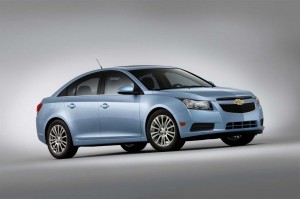The recent run-up in fuel prices has put the spotlight on hybrids, battery cars and other high-mileage vehicles. But while it may sound great to get 40, even 50 miles a gallon, are you spending an arm and a leg to save far less than you might expect on your annual gasoline bill?
Some hybrids carry a premium that can push up to $5,000 or more. The penalty is even higher with plug-ins and pure battery-electric vehicles, or BEVs. Even on many “eco” models using relatively conventional gasoline power you could be in for a stiff price penalty. But is it worth it?
Not necessarily, if you’re simply trying to save money and not really worried about going “green.” But there are some models that minimize your up-front investment and deliver you savings fast.
“The price of gas has consumers thinking about fuel economy but there’s a financial investment involved with most of these fuel-saving packages,” says Jesse Toprak, Vice President of Market Intelligence at TrueCar.com. “It’s important to compare the improvements in fuel economy and the extra costs of the package before purchasing a new vehicle.”
Smart shoppers look at the so-called “payback period,” the time it takes to recover your up-front investment. On some models, the extra cost for that “eco” package can take you a decade – or more – to get your money back in the form of lower fuel bills.
Toprak stresses that shoppers should be looking at the EPA’s Combined fuel economy number, not the Highway mileage manufacturers like to advertise. For most motorists, the lower Combined figure is likely to be closer to what you’ll actually get, day-to-day.
Take the 2012 Honda Civic HF, it’s rated at 33.4 mpg, compared to 32.1 for the conventional Honda Civic LX. It also carries a typical price premium of about $766 on an average transaction price – or ATP – of $19,398. TrueCar estimates the average owner will need to keep the HF for 10.6 years to recover that premium.
The new $20,982 Chevrolet Cruze Eco, which gets 30.6 mpg Combined, would need 48 years to recover the nearly $900 premium over the conventional Cruze, at 30.3 mpg.
The good news is that there are a number of vehicles that can pay you back in less than five years.
The best deal of the bunch? The Mazda3 Touring with the SkyActiv powertrain, which not only delivers 32.4 mpg, 7.7 mpg better than the conventionally powered Mazda3, but costs about $900 less, at $22,366. You start saving cash the moment you drive off the lot.
The other big winners:
- The Chevrolet Sonic with Ecotec Turbo carries a $635 premium, at $16,951, but it delivers 33.1 mpg compared to 29.4 for the base Sonic, so you’ll earn your premium back within 2.9 years;
- The $27,566 Ford Edge with Ecoboost is $864 more than the same “people-mover with a standard 3.5-liter V-6, but is rated at 24.3 mpg v 21.9. You’ll be in the black within 3.3 years;
- The Kia Forte Sedan EX Eco is, at $17,786, just $273 more than the sedan with a 2.0-liter engine. It gets an extra 1 mpg Combined, at 30.7 mpg, and will pay you back in 4.2 years;
- For those who need a big truck, the $28,732 Ford F-150 SuperCab 145” with Ecoboost carries an $853 premium over the same F-150 model with a 5.0-liter V-8. You’ll get an extra mpg at 18.2, and see payback in 4.5 years, says TrueCar.
The service’s estimates are based on gas at $3.90 a gallon and a motorist driving 15,000 miles a year. Of course, the higher the price the quicker the savings. On the other hand, if you only clock 12,000 miles annually, the payback period will stretch out even longer.



Why do the VW TDI’s never get a mention? I purchased a Jetta TDI in 02′ for $18K and now have 260K miles averaging 48mpg for the past 10 years. Just bought my wife a 2012′ Jetta TDI for $22K, she’s averaging 46mpg on her commute. No expensive batteries, limited miles, unproven technology and the diesel will cruise the highway at 80mph effortlessly. Change the oil and timing belt every 100K and the engine will last 400K miles. What’s not to like?